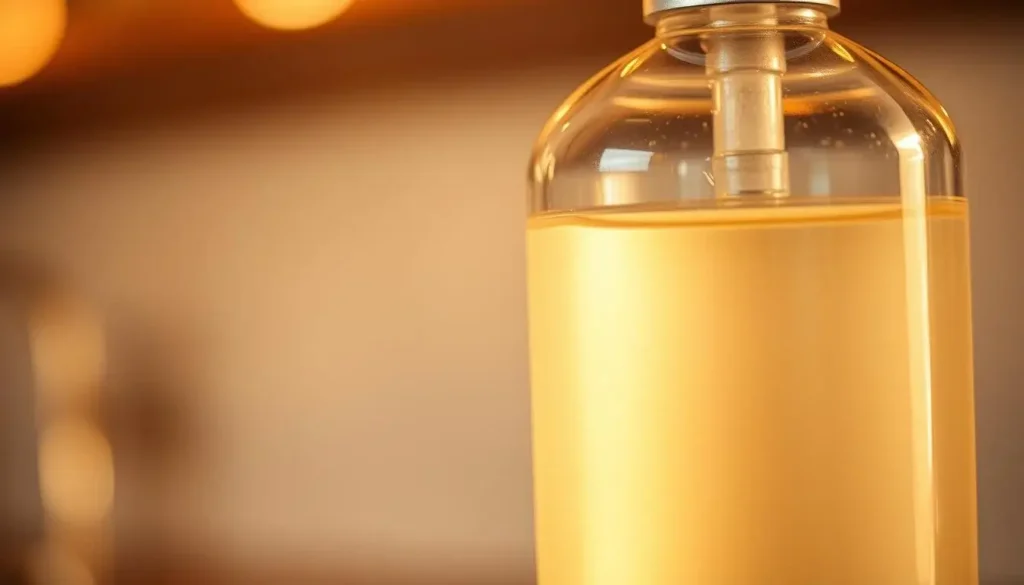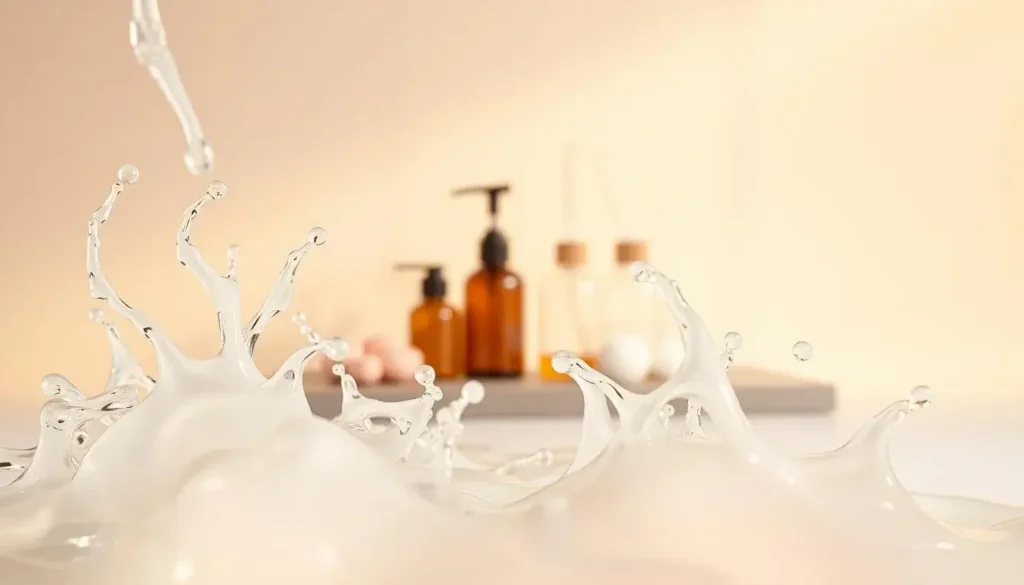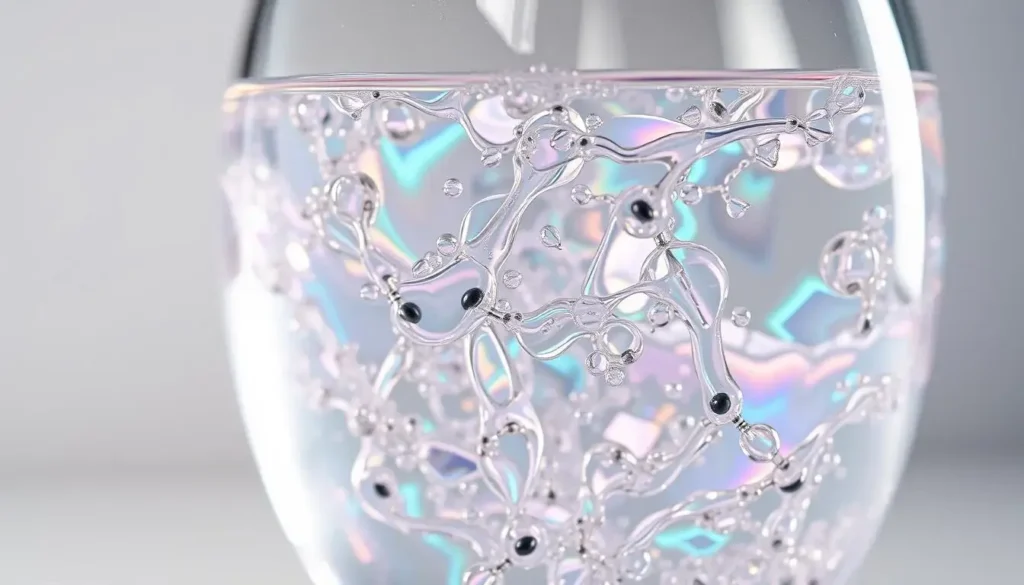When it comes to keeping clean, you can choose between liquid soap and bar soap. Understanding the difference between soap and detergent is crucial in making this choice. Liquid soap is a liquid form of soap, often in a bottle with a pump. It’s gentle and effective at cleaning and removing germs. It also makes your skin soft and hydrated, making it an excellent choice for skin care.
Thinking about the environment, liquid soap uses more energy and resources than bar soap. But, both are good at cleaning. Bar soaps are better for dry skin because they have glycerine. This leads us to an important question: are bar soaps better than liquid?

Key Takeaways
- Liquid soap and bar soap are equally effective in cleansing and removing germs.
- Liquid soap has a higher carbon footprint compared to bar soap due to its production and packaging.
- Bar soaps contain glycerine, which is beneficial for dry skin and conditions like eczema.
- Liquid soap often contains more moisturizing ingredients, making it kinder to sensitive skin.
- Bar soap users tend to use less product per hand wash compared to liquid soap users.
- The cost of washing with bar soap is less than half a penny per wash, whereas liquid soap costs around 3.5 cents per wash.
- Natural bar soaps can last about a month when used once a day, making them a more economical option.
What is Liquid Soap: Understanding the Basics
Liquid soap is made by mixing fats or oils with an alkali. This creates a chemical reaction called saponification. To make it, you need ingredients like potassium hydroxide, not sodium hydroxide. Understanding what is soap made of is key to appreciating its properties.
A basic recipe includes oils like coconut and olive oil. You also need an alkaline substance like potassium hydroxide. The saponification process mixes oils with the alkali. This makes soap and glycerin. How is liquid soap made? Let’s break it down:

- Mixing the oils and alkali
- Blending the mixture until it reaches the desired consistency
- Pouring the mixture into a mold and allowing it to set
By following a simple recipe and using the right ingredients, you can make liquid soap at home. It’s a fun DIY project. You can also customize the soap to your liking, creating your own natural soap.
The Science Behind Liquid Soap’s Cleansing Power
Liquid soap cleans and moisturizes the skin well. It does this thanks to its special properties. The liquid soap benefits include making tiny bubbles called micelles. These bubbles catch and remove dirt and germs from the skin, demonstrating its superior cleaning power.
Using liquid soap can clean and moisturize your skin. Its ingredients, like surfactants and emulsifiers, create a rich lather. This lather gently cleanses your skin. The soap’s pH level is also adjusted to match your skin’s natural pH. This helps prevent irritation and keeps your skin healthy.
Some important factors that help liquid soap clean well include:
- Surfactants, which make water easier to clean with
- Emulsifiers, which mix oil and water for a consistent texture
- pH level, which is set to match your skin’s natural pH to avoid irritation

Knowing how liquid soap cleans can help you see its benefits. It’s great for daily cleaning, whether you have sensitive skin or just want a refreshing shower. Liquid soap is a good choice for many, especially those looking for hydration in their cleansing routine.
Essential Ingredients in Liquid Soap Products
Choosing the right liquid soap is important. You want it to be gentle and clean well. The best brands mix base ingredients, surfactants, emulsifiers, preservatives, and stabilizers. These help create a good lather, moisturize, and stop bacteria and mold. Understanding what is liquid soap made of can help you make an informed choice.
Base ingredients are key. They include vegetable oils like coconut, olive, and palm oil. These oils are mixed with surfactants. Surfactants make water less sticky, leading to better cleaning and lather. Sodium laureth sulfate is a common surfactant, though many prefer sulfate-free options.
Key Ingredients and Their Functions
- Base ingredients: provide moisturizing properties and a rich lather
- Surfactants: reduce surface tension and allow for effective cleaning
- Emulsifiers: combine oil and water-based ingredients
- Preservatives: prevent the growth of bacteria and mold
- Stabilizers: maintain the product’s texture and consistency
- Emollients: soften and smooth the skin
Knowing what’s in your liquid soap helps you choose better. Look for natural ingredients, avoid harsh chemicals, and pick something gentle on your skin. This is especially important for those with allergies or sensitive skin.
Benefits of Using Liquid Soap
Liquid soap benefits are many. It’s easy to use and comes in handy bottles. This makes it safer than bar soaps. Plus, it’s great for travel because it comes in small sizes. Many people prefer liquid soap or body wash for its convenience and perceived hygiene benefits.
People use liquid soap for many things. It’s good for washing hands, face, and body. Natural soap in liquid form is gentle and doesn’t have harsh chemicals. It’s great for those with sensitive skin.
Here are some benefits of using liquid soap:
- Biodegradable, contributing to environmental sustainability
- Moisturizing properties, making it beneficial for dry skin
- Antibacterial, antifungal, and antimicrobial benefits due to essential oils
- Economical, as a small amount is effective and lasts longer
In conclusion, liquid soap has many advantages. It’s easy to use and has lots of benefits. Whether you choose natural or commercial soap, it’s a key part of your daily care routine.
Liquid Soap vs. Bar Soap: A Comparative Look
Choosing between liquid soap and bar soap involves several factors. Each has its benefits and drawbacks. We’ll look at hygiene, environmental impact, cost, and convenience of both. This bar soap vs liquid soap comparison will help you make an informed decision.
Liquid soap is easier to use because it comes from a bottle. Bar soap, though, can save money because it lasts longer. Let’s explore the question: are bar soaps better than liquid?
Here are some key points to consider when comparing liquid soap and bar soap:
- Hygiene factors: Liquid soap is seen as cleaner than bar soap because it doesn’t hold bacteria as well.
- Environmental impact: Bar soap is better for the planet because it needs less packaging and uses natural ingredients.
- Cost-effectiveness: Bar soap is cheaper in the long run because it lasts longer and costs less upfront.
- Convenience: Liquid hand soap is easier to use because it’s dispensed from a bottle.
- Skin effects: Bar soap may have a more drying effect on the skin compared to liquid soap.
What is bar soap used for? Bar soap is commonly used for personal hygiene, including washing hands, face, and body. It’s also popular for its longevity and eco-friendly packaging.
In conclusion, the choice between liquid soap and bar soap depends on your needs and preferences. Think about hygiene, environmental impact, cost, and convenience. This will help you decide what’s best for you.
How to Make Your Own Liquid Soap at Home
To make liquid soap at home, you need olive oil, water, and potassium hydroxide (KOH). Making liquid soap is like making bar soap but with some differences. KOH is used instead of sodium hydroxide (NaOH) for bar soap. If you’re wondering if can you make liquid soap from bar soap, it’s a different process entirely and not recommended for the best results.
A basic liquid soap recipe has 500g olive oil, 156g water, and 104g KOH. You can add things like vegetable glycerine to improve it. Mix the ingredients and heat them to about 85°C (185°F).
Here’s how to make your liquid soap at home:
- Mix olive oil, water, and KOH in a crock pot or heat-resistant container.
- Heat the mix until it’s about 85°C (185°F).
- Let it cool and thicken, then add optional ingredients like vegetable glycerine.
- Dilute the soap paste with water to make the final liquid soap.
By following these steps and using a basic liquid soap recipe, you can make your own soap. It’s a fun DIY project. You can customize it with your favorite ingredients and fragrances. This guide helps you start making liquid soap for yourself or as a gift.
Choosing the Right Liquid Soap for Your Needs
When picking a liquid soap, think about your skin type and needs. If your skin is dry or sensitive, find a best liquid soap brand with gentle, hydrating ingredients. Look for glycerin, ceramides, and hyaluronic acid. These help keep your skin moist and calm dryness. Consider whether you need a liquid detergent soap for cleaning or a gentler option for personal care.
Also, think about what you like. Do you want a soap with a strong scent or one without fragrance? Or maybe you’re looking for something eco-friendly or sustainably made? Choosing based on these preferences helps find a soap that cleans well and feels good.
Dr. Bronner’s, CeraVe, and Green People are top best liquid soap brand picks. They have many liquid soap ingredients and formulas for all skin types. Always check the label to make sure the ingredients match your skin and preferences. Some people prefer method bath soap for its eco-friendly approach.
Common Uses and Applications of Liquid Soap
Liquid soap is great for many things. You can use it to clean your hands or as a cleaner for surfaces. It’s a liquid hand soap and more. Understanding the purpose of liquid soap helps in choosing the right product for your needs.
It’s often preferred over bar soap for washing hands, body, and face. It’s good for people with sensitive skin. You can also use it to clean your home, like dishes and floors. This versatility is one reason why many ask, “Is detergent the same as soap?” While they serve similar purposes, they have different compositions. Detergents are synthetic cleaning agents, while soaps are made from natural fats and oils.
Liquid soap is moisturizing and gentle. It can be made with natural ingredients. This makes it a favorite for those who want eco-friendly products.
When picking a liquid soap, look for organic liquid hand soap. Make sure it meets USDA organic food standards.
Here are some common liquid soap uses:
- Personal hygiene: washing hands, body, and face
- Household cleaning: cleaning dishes, floors, walls, and woodwork
- Commercial applications: cleaning surfaces and objects in offices, restaurants, and other public spaces
Best Practices for Storing and Using Liquid Soap
To get the most out of liquid soap benefits, you need to store and use it right. Some liquid soap ingredients can grow bacteria faster than others. For example, Castile soap, found in many soaps, lasts about three years. But, it must stay dry and cool to avoid clumps and spoilage. This is an important consideration when comparing liquid bar soap options.
Here are some tips for storing and using liquid soap:
- Store liquid soap in a tightly sealed container to prevent moisture absorption and clumping.
- Keep the container away from direct sunlight and heat sources.
- Use a clean dispenser or pump to minimize the risk of contamination.
- Dilute the liquid soap according to the manufacturer’s instructions to avoid excessive concentration.
By following these tips, you can enjoy all the liquid soap benefits. This way, you also lower the chance of bacteria growth. Always check the expiration date and keep the soap in a cool, dry spot for the best quality and longevity.
| Soap Type | Storage Temperature | Humidity Level |
|---|---|---|
| Castile Soap | 50-75°F (10-24°C) | Below 50% |
| African Black Soap | 50-75°F (10-24°C) | Below 50% |
Conclusion: Making the Switch to Liquid Soap
Liquid soap has many benefits over bar soap. It’s easier to use and cleans better. It also moisturizes your skin. However, the difference between soap and detergent is important to understand when making your choice. While both clean effectively, soaps are generally milder and more suitable for personal care.
Studies show liquid soap removes dirt, grease, and germs well. This makes it a cleaner choice for you and your home. However, some argue that bar soaps are better than liquid in terms of environmental impact. The debate on whether are bar soaps better than liquid continues, with each having its own advantages.
Switching to liquid soap brings many advantages. It’s great for your daily routine or cleaning your house. Liquid soap has been around for a long time and keeps getting better. When was liquid soap invented? It was first patented in 1865 by William Shepphard. Since then, it has evolved into a reliable way to stay clean and healthy.
FAQ
Q: What is liquid soap, and how does it differ from bar soap?
A: Liquid soap is a liquid form of soap, unlike bar soap. It has surfactants and emulsifiers for easy use. It’s often considered better for cleaning and personal care than bar soap. The main difference between soap and detergent is in their chemical composition and how they’re made. Soaps are derived from natural fats and oils, while detergents are synthetic.
Q: What is the chemical composition of liquid soap?
A: Liquid soap has base ingredients like vegetable oils or synthetic detergents. It also has surfactants, emulsifiers, preservatives, and stabilizers. These ingredients clean and moisturize the skin. Understanding what is soap made of helps in appreciating its properties.
Q: How does liquid soap cleanse and remove germs?
A: Liquid soap forms micelles to trap dirt and germs. When you wash, these micelles remove impurities. This leaves your skin clean and refreshed. This process is similar for both liquid soap and liquid detergent soap.
Q: What are the essential ingredients in liquid soap products?
A: Liquid soap includes base ingredients, surfactants, emulsifiers, preservatives, and stabilizers. These ingredients clean and moisturize the skin. Some products may contain sodium laureth sulfate, while others are sulfate-free.
Q: What are the benefits of using liquid soap?
A: Liquid soap is easy to use and cleans well. It moisturizes the skin and is versatile for many uses. It’s often preferred for skin care due to its gentle nature and hydration properties.
Q: How does liquid soap compare to bar soap in terms of hygiene, environmental impact, and cost-effectiveness?
A: Liquid soap is more convenient and hygienic. But bar soap is cheaper and better for the environment. It needs less packaging and transport. This bar soap vs liquid soap comparison is crucial for making an informed choice.
Q: How can I make my own liquid soap at home?
A: Making liquid soap at home is a fun DIY project. You mix base ingredients, surfactants, and additives. It lets you customize the soap to your liking. While you can’t directly make liquid soap from bar soap, you can create liquid soap from scratch using oils and potassium hydroxide.
Q: How can I choose the right liquid soap for my needs?
A: Choose liquid soap based on your skin type and needs. Look at the labels for ingredients. This helps avoid irritants or allergens. Consider factors like whether you need a body wash or a more specialized product.
Q: What are the common uses and applications of liquid soap?
A: Liquid soap is great for personal hygiene and cleaning. It’s also used in professional cleaning and industrial settings. The purpose of liquid soap extends beyond just hand washing to include various cleaning tasks.
Q: How should I store and use liquid soap properly?
A: Store liquid soap in a cool, dry place. Follow the use instructions. This keeps the soap effective and prevents bacterial growth. Proper storage is crucial whether you’re using natural soap or commercial products.
Q: Is detergent the same as soap?
A: No, detergent is not the same as soap. While both are cleaning agents, they have different chemical compositions. Soap is made from natural fats and oils, while detergents are synthetic compounds. Detergents are often more effective in hard water and can be formulated for specific cleaning tasks.
